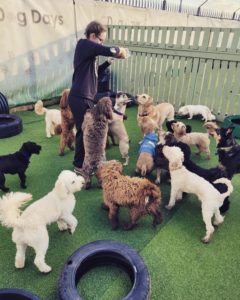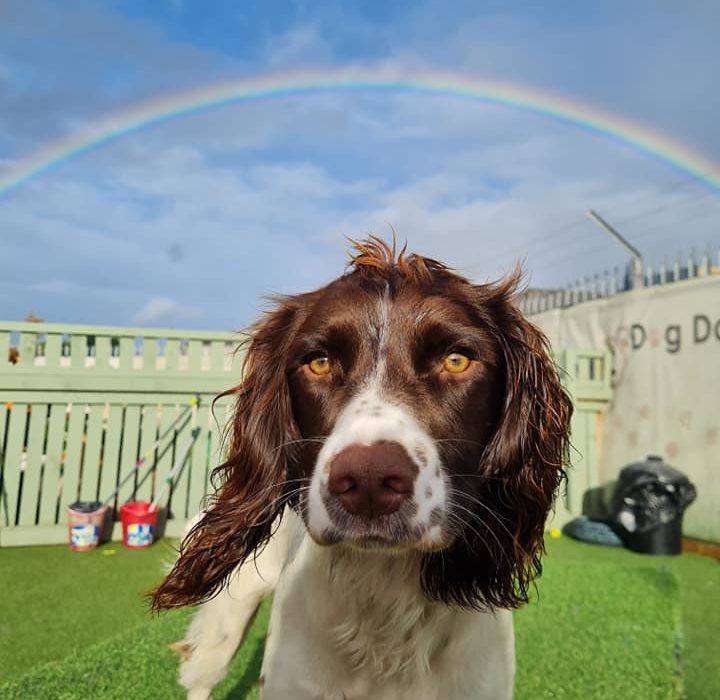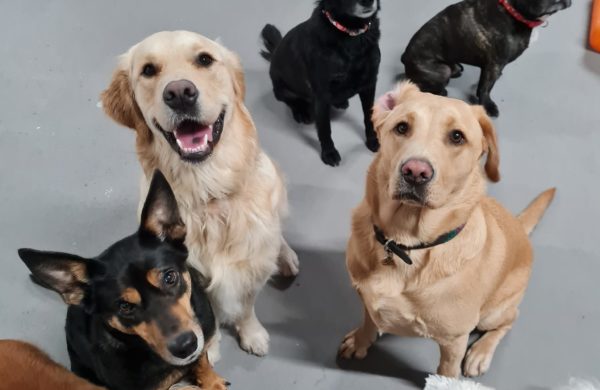 Thank you to Robin K Bennett, we couldn’t have worded it better ourselves!
Thank you to Robin K Bennett, we couldn’t have worded it better ourselves!
I received an email the other day that started with, “My dog got kicked out of daycare today.” It was from a dog owner I knew. She loves her dog and was looking for outlets for his energy. She is a fantastic owner — the kind every dog trainer wants to meet. She was bonded to her dog, committed to his well-being, and loved to hear advice from pet professionals on how to improve her dog’s life.
So she emailed me to find out what she had done wrong. She needed to express her embarrassment with her dog, and wanted to cry on my shoulder (virtually) and find out what she should be doing to fix what she viewed as her dog’s problems.
She had a lovely dog, with no behavioral problems. The dog was friendly with people, well mannered in the house, walked nicely on leash and was absolutely adored by everyone in the family. But there was this one problem….her dog got kicked out of daycare today.
My advice to her? “Just don’t go to the daycare and don’t go to dog parks.” That’s it. No magic wand to fix a problem. No behavioral modification program to force her dog to tolerate the presence of large numbers of other dogs. No litany of tools and tricks she should use to get her dog to accept the environment of off-leash play. Just don’t go to the daycare or dog park. That’s it.
Far too often we try to force our pets into environments they may not like. And when we do, the dog suffers. I’ve seen shy dogs taken to crowded parades. The dog is not happy. I’ve seen sound sensitive dogs taken to fireworks displays. The dog is not happy. And I’ve seen dogs who don’t particularly enjoy the company of other dogs taken to dog parks and daycares. The dog is not happy.
Most of the times these situations occur because well-meaning dog owners are trying to do things they think would be fun for their dog. In the excitement of taking the dog someplace new, many owners fail to notice how their dog is responding to the new environment. I recommend looking to the dog for clues as to what makes them happy. Watch for loose, wiggly body language in your dog. If your dog is hiding, shaking, jumping up on you, or appears more nervous than when you are hanging out at home, he’s probably not happy.
Not every dog likes off-leash play and that’s ok. It’s not a statement about the dog. It’s about an environment that just isn’t a good fit for a particular dog. Just like an evening at the fireworks isn’t the best environment for a dog who is sound sensitive and a crowded parade isn’t the best environment for a dog who doesn’t enjoy crowds, an off-leash play environment isn’t the best place for a dog that doesn’t enjoy playing with other dogs.
When a dog doesn’t do well in off-leash play it is not necessarily a symptom of a problem, or a bad dog or a dog in need of behavioral modification. This might be the case, but more often than not, it’s just a dog who prefers people. It’s a dog who would rather hang out with the people he loves than dogs he doesn’t know. It’s a dog who would love a hike in the woods but doesn’t enjoy off-leash play with a group of other dogs. This doesn’t make the dog bad.
But is this normal? Don’t all dogs want to play with other dogs? Shouldn’t I socialize him so he gets used to it? I get asked these questions all the time. The truth is, there are far more dogs who do not enjoy off-leash play, than there are dogs who love it.
When a pet care professional dismisses your dog from daycare or recommends you don’t go to the dog park, you should thank them. Thank them for caring more about your pet, than about making a buck by bringing your dog into their facility if the dog isn’t going to enjoy the off-leash environment. Thank them for seeing your dog as a unique animal with individual temperament traits. Thank them for trying to look out for the well-being of your pet and putting your dog’s safety and comfort first.
What if you dog doesn’t like the off-leash play? It’s ok. You are not a bad owner and your dog is not a bad dog. Just find other ways to exercise your dog that don’t involve interacting with other dogs. Go for a walk, take a hike, give your dog a massage, or try some activity such as agility, RallyO, or nosework. You’ll both have a great time bonding, and your dog will be happy.


